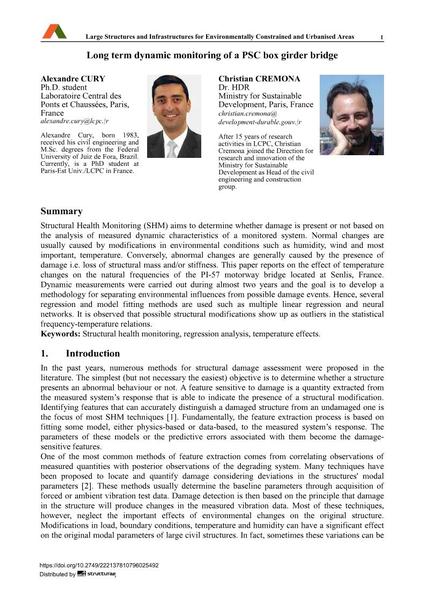Long term dynamic monitoring of a PSC box girder bridge

|
|
|||||||||||
Bibliografische Angaben
| Autor(en): |
Alexandre Cury
Christian Crémona |
||||
|---|---|---|---|---|---|
| Medium: | Tagungsbeitrag | ||||
| Sprache(n): | Englisch | ||||
| Tagung: | IABSE Symposium: Large Structures and Infrastructures for Environmentally Constrained and Urbanised Areas, Venice, Italy, 22-24 September 2010 | ||||
| Veröffentlicht in: | IABSE Symposium Venice 2010 | ||||
|
|||||
| Seite(n): | 484-485 | ||||
| Anzahl der Seiten (im PDF): | 8 | ||||
| Jahr: | 2010 | ||||
| DOI: | 10.2749/222137810796025492 | ||||
| Abstrakt: |
Structural Health Monitoring (SHM) aims to determine whether damage is present or not based on the analysis of measured dynamic characteristics of a monitored system. Normal changes are usually caused by modifications in environmental conditions such as humidity, wind and most important, temperature. Conversely, abnormal changes are generally caused by the presence of damage i.e. loss of structural mass and/or stiffness. This paper reports on the effect of temperature changes on the natural frequencies of the PI-57 motorway bridge located at Senlis, France. Dynamic measurements were carried out during almost two years and the goal is to develop a methodology for separating environmental influences from possible damage events. Hence, several regression and model fitting methods are used such as multiple linear regression and neural networks. It is observed that possible structural modifications show up as outliers in the statistical frequency-temperature relations. |
||||
